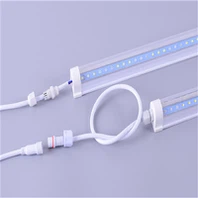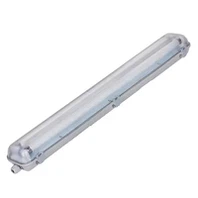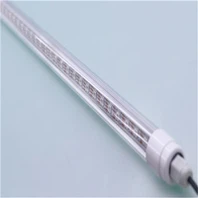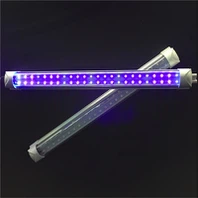Is It Possible to Leave Plant Grow Lights on All Day?
As hydroponics and indoor growing become more popular, gardeners frequently ask if plant grow lights can be left on all day. The answer to this question depends on knowing plant biology, the function of lighting, and any potential trade-offs, even if grow lights are crucial for enhancing natural sunshine, particularly in low-light conditions. We must first examine how plants respond to light, the function of dark periods, and the real-world effects of continuous lighting before we can fully address it.
The Study of Light-Plant Interaction
Photosynthesis, the process by which light energy is transformed into chemical energy (glucose) to power growth, flowering, and fruit development, depends on light for plants. However, respiration-the process by which plants break down glucose to produce energy for cellular functions-must be balanced with photosynthesis, which is not a continuous process. Both light and dark conditions are necessary for respiration, but in natural settings, dark times free plants from the "competition" of photosynthesis to concentrate on respiration.
Certain wavelengths of sunlight, mostly red and blue, which are best absorbed by chlorophyll, are replicated by grow lights. Continuous lighting disturbs the natural "light-dark cycle" (photoperiod) that plants have evolved to follow, even though it can prolong the daily light period past the hours of daylight. This cycle controls important physiological functions like flowering, dormancy, and stress response in addition to energy production. For instance, long-day plants (like spinach or lettuce) do well with shorter dark periods, whereas short-day plants (like chrysanthemums or poinsettias) need longer dark periods to initiate flowering. However, no plant has ever developed to live without any dark periods.
Why Most Plants Do Not Benefit from 24-Hour Lighting
1. A decrease in photosynthetic effectiveness
More light does not necessarily translate into more growth, despite what many people think. The highest amount of light that plants can effectively employ for photosynthesis is known as their light saturation point. After this, more light does not result in more glucose being produced; rather, it can lead to photoinhibition, a condition in which too much light harms chlorophyll and other photosynthetic components. The plant's capacity to transform light into energy is gradually diminished by photoinhibition, which can result in stunted growth, yellowing leaves, or even leaf burn. Because plants don't have a dark time to repair damaged cells or reset their photosynthetic systems, continuous sunlight increases this risk.
2. Interrupted Energy Allocation and Respiration
For plants to efficiently distribute energy, dark times are essential. Photosynthesis creates glucose during the day, and when there is no light at night, plants concentrate on using that glucose for growth (e.g., root expansion, cell division, and nutrient uptake). Plants are compelled to prioritise photosynthesis around-the-clock when grow lights are left on, which reduces the amount of energy available for respiration and growth-related activities. This mismatch eventually results in "energy waste" since the plant uses more energy to sustain photosynthesis than it can use to grow. For instance, research on leafy greens (like lettuce) has revealed that plants receiving 16–18 hours of light per day have better nutrient content and grow more quickly than those receiving 24-hour lighting because the shorter dark period permits effective respiration without photosynthetic exhaustion.
3. A Higher Risk of Stress and Illness
Plants' ability to withstand stress is weakened by constant illumination. Plants cannot recover from oxidative damage brought on by light (such as reactive oxygen species generated during photosynthesis) in the absence of dark periods. In addition to the heat produced by grow lights (even LED models, which are cooler than traditional HPS or CFL lights), this damage builds up over time, making plants more vulnerable to diseases (like powdery mildew) and pests (like aphids or spider mites). Particularly in potted plants with little ventilation, high temperatures and continuous light provide a damp, stagnant atmosphere that is perfect for fungal growth and root rot.
4. Energy Waste and Increased Expenses
Even energy-efficient LED grow lights use electricity all the time. Compared to a 12- to 18-hour cycle, running them around the clock results in far higher energy costs. For instance, depending on average electricity rates in the United States, a 100W LED grow lamp used 16 hours a day costs around \(0.50) per week; when used 24 hours a day, the cost doubles to \)0.75 per week. This results in a 50% rise in lighting costs over the course of a year, with no appreciable increase in plant growth. This inefficiency can be especially expensive for commercial producers because it reduces profit margins without increasing yields.
Exclusions: When Is Constant Lighting Possible to Be Temporary?
Although 24-hour lighting is not advised for long-term plant maintenance, there are a few uncommon, brief situations in which it can be strategically employed-but with caution:
Stages of seed germination and seedling development: For one to two weeks following seed germination, some gardeners employ 24-hour lighting to promote robust root and leaf development. Early on, photoinhibition is less likely to occur in seedlings due to their high energy requirements. To prevent stress, it is crucial to switch to a 12–16 hour light cycle once seedlings have their first true leaves. Emergency Light Supplementation: Growers may temporarily increase lighting to 18–20 hours per day in areas with extreme winter darkness (such as high latitudes with less than 6 hours of natural daylight) to keep plants from dormant. Even so, 24 hours is hazardous and needless.
The fact that these exceptions are species-specific and transient should not be overlooked. For instance, despite their ability to withstand extended light durations, succulents and cacti-which are suited to arid, high-light conditions-still need four to six hours of darkness in order to flourish. Permanent, round-the-clock lighting is not beneficial for any plant.
Grow Light Schedule Best Practices
The type of plant and stage of growth determine the ideal light duration:
Herbs and leafy greens: These quickly growing plants (lettuce, spinach, basil) require 14–16 hours of sunshine every day to flourish. Leaf bitterness is avoided and effective breathing is made possible by an 8–10 hour dark period.
Flowering and Fruiting Plants: During the vegetative stage, tomatoes, peppers, and cannabis-a popular indoor crop-need 12–14 hours of light, and during the flowering stage, they need 10–12 hours. Bud development is aided by shorter dark periods during flowering.
Cacti and succulents: To replicate their native desert cycles, these drought-tolerant plants require 10–12 hours of light and 12–14 hours of darkness each day.
As previously stated, seedlings should receive 16–18 hours of light every day for the first 1-2 weeks before switching to the schedule of the adult plant.
Growers should think about distance and light intensity in addition to duration:
To prevent burning, adjust how far away the light is from the plant (12 to 24 inches for LEDs, depending on wattage).
Automating the light-dark cycle using a timer guarantees regularity, which is essential for plant health.
In conclusion
In conclusion, most plants shouldn't have their grow lights on all the time. In addition to wasting energy, continuous lighting interferes with the natural light-dark cycle, lowers photosynthetic efficiency, damages respiration, and raises the risk of illness and stress. Although there are occasional exceptions (such as the germination of seedlings), these are transient and need close observation.
The secret to good indoor gardening is to replicate as much of the natural light as you can. Without the disadvantages of 24-hour lighting, producers may optimize growth, production, and plant health by adjusting the light duration to the species and growth stage of the plant. To determine the ideal lighting schedule for a particular plant, it is advisable to reference species-specific growth manuals or local extension agencies.
Grow lights are ultimately a tool to enhance, not to replace, the natural equilibrium of light and shade. Indoor gardeners can grow robust, healthy plants while controlling their energy expenses and environmental effect by adhering to this balance.
Shenzhen Benwei Lighting Technology Co.,Ltd
Telephone: +86 0755 27186329
Mobile(+86)18673599565
Whatsapp :19113306783
Email:bwzm15@benweilighting.com
Skype: benweilight88
Web: www.benweilight.com




